
"I'm filled with dread" over climate change says Liam Young
Future-gazing architect and filmmaker Liam Young explains why he believes humans will fail to avert climate catastrophe in this interview with Dezeen.
Young spoke to Dezeen ahead of his Planetary Redesign exhibition, currently on display at the National Gallery of Victoria (NGV).
This features his latest film, The Great Endeavour, which proposes a radical solution to the climate crisis. The film depicts an alternative future where humankind unites to cut carbon emissions by building massive-scale wind farms in the ocean and solar farms in the desert.
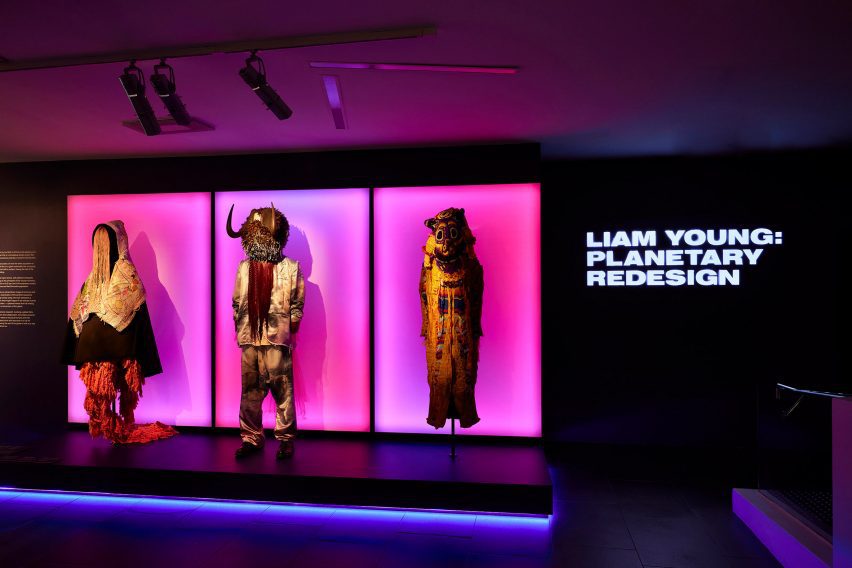
To achieve this, the film imagines a mobilisation of workers and resources on a planetary scale, which Young believes is needed to "not go extinct".
"The Great Endeavour envisions the scale of global collaboration that's necessary," LA-based Young told Dezeen.
"The structure is so complex and expensive that no single nation would be able to afford them or conceive them, but if we make a decision not to go extinct we need to start building these machines."
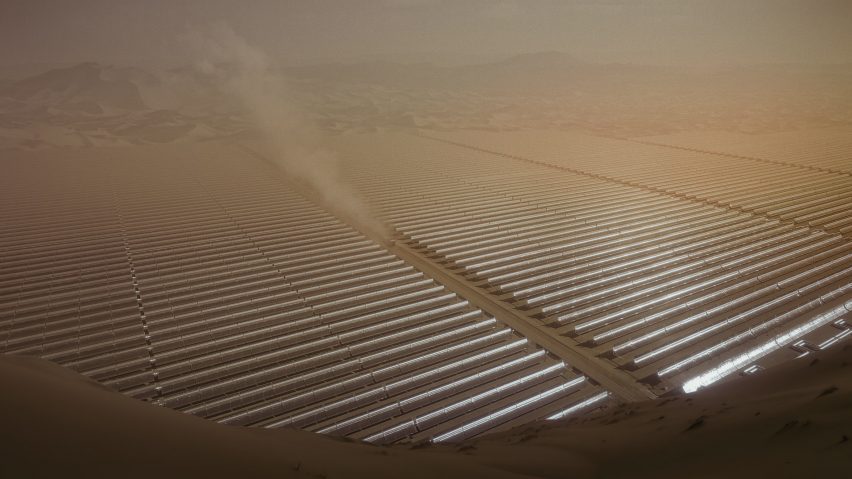
Young's overarching point is that conventional approaches to sustainability fall far short of the level of action required to deal with climate change.
"All our visions about the future that come from popular culture and designers and architects are continuations of environmental ideals that began in the 1960s and '70s," he said.
"Architects putting trees on roofs, a community garden in Brooklyn growing tomatoes, recycling windows, trying to make vegan diets sexy as opposed to meat diet — all those things are valuable and important, but they no longer work at a scale of change that we need, which is systemic and planetary."
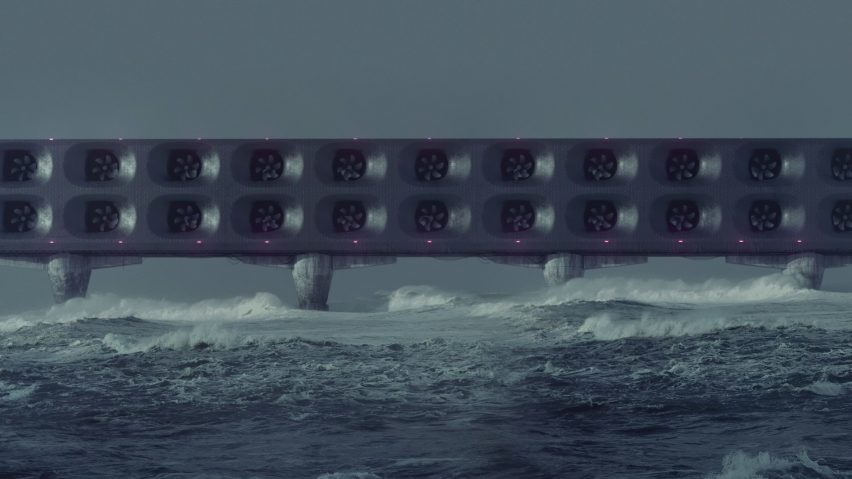
The barriers to making the necessary shift, he argues, are "no longer a technology problem, but a cultural and political problem".
"All the technology we need is already here," he explained. "If we wanted to, we can change tomorrow. In those terms, I'm incredibly optimistic and hopeful about the future."
"But do I think we are actually going to change and do this? No, I don't," he added.
"The more I dig into this research through these projects, the more I'm filled with dread where I see not only are we not limiting and scaling back, but instead we are increasing fossil-fuel production — we are doing the opposite."
Our current political systems, he says, are not capable of delivering the degree of change required at sufficient speed.
"What we are seeing is what we think of as democratic nations around the world completely failing in their responsibilities of doing anything in relation to climate change," he said.
"In the US, where I'm based, they can't even agree that climate change exists, never mind actually doing anything at a scale required to make a difference."
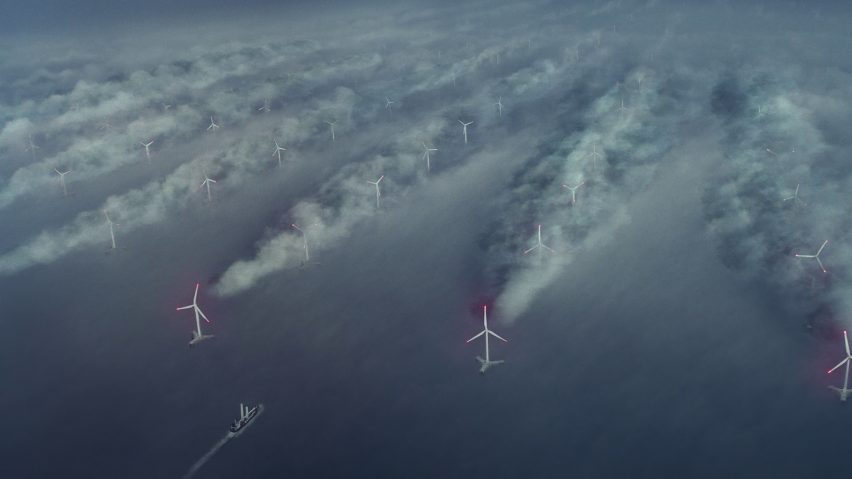
Non-democratic countries are the ones making the biggest strides, Young claimed.
"The nations that have made substantial moves in that direction are single-government nations," he said.
"China has taken offline thousands of coal-burning power stations across the last decade and has built the world's largest wind farms, the world's largest solar field, the world's largest hydroelectric dam. To build that dam, it displaced millions of people, but it could do that."
"I'm not advocating for a move towards dictatorship, but the current political system is not fit for purpose in the context of global collaboration needed for climate change."
Another non-democratic country displaying enormous ambition when it comes to projects touted as ways of reducing emissions is Saudi Arabia.
Its project The Line, currently being constructed in the desert, is planned as a renewables-powered, 170-kilometre-long linear city for nine-million people.
Young criticised The Line as "a very elaborate propaganda piece".
"Someone drew a line on the page and they saw the power of the headline-generating machine," he said. "They are not manufacturing a city, but manufacturing an image of a city."
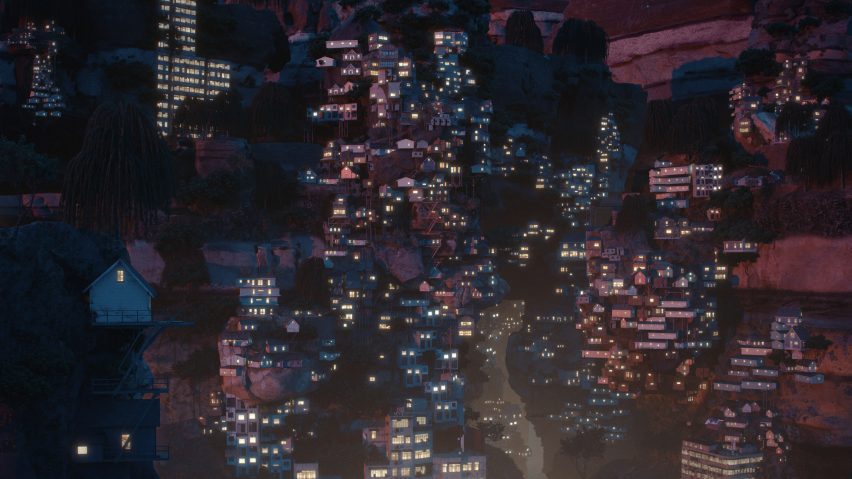
"The architects working on The Line are great examples of the mercenary nature of the discipline, which has for a long time been purely in the service of those with money and power," he added.
Nevertheless, he suggested that the mega-project provokes an important discussion about which nations around the world have the sufficient ambition and capacity to do something at a scale that matches the threat of climate change.
"The Line is an intriguing example of the scale of construction that is required to deal with some of the problem," he said.
"It's a shame that the energy is focused on the ridiculous image of the city, but it's a useful conversation point nonetheless."
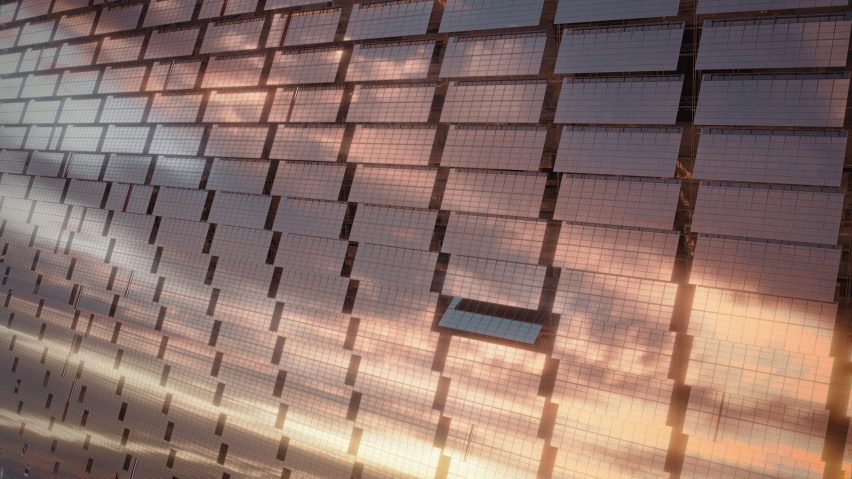
Young's work has previously explored the idea of a built-from-scratch, low-emission mega-city.
The Great Endeavour is being shown at NGV as part of Young's solo exhibition Planetary Redesign, which also features his short film Planet City along with photography and costumes made in collaboration with costume designer Ane Crabtree.
First commissioned for the 2020 NGV Triennial, Planet City is a short animation that imagines a new city housing the entire human population.
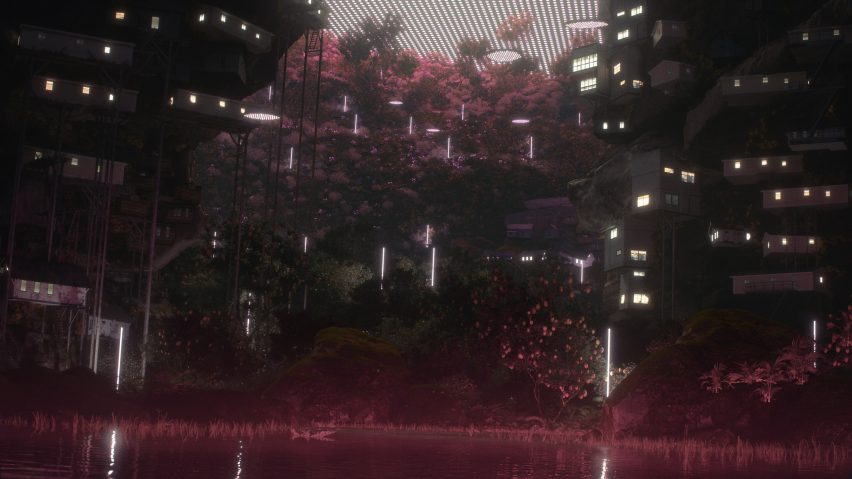
Young has continued to expand the Planet City idea with further research, particularly on the technology that could help the city be self-sustainable, such as food systems and agriculture infrastructure.
For instance, he imagines a canal system in the city feeding a massive network of vertical farms.
"Although the work I do is often described as science-fiction, it is all based on the technology in the present moment – there isn't any imaginary technology in there, unlike a lot of Hollywood science-fiction," Young said.
"My job as a world-builder is identifying the technology at the moment and turning up the volume," he added.
"My projects are really just science illustrators. All I'm doing is taking these technologies which have the potential to engage and deal with the problem, such as the scale of the climate crisis."
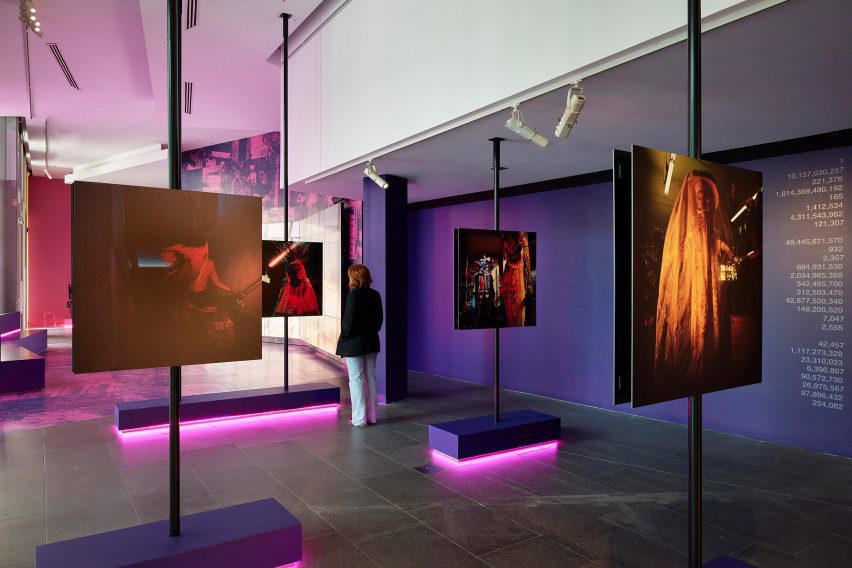
Despite his pessimism about politics, Young believes architects and designers still have an important role to play today to communicate viable and hopeful planetary-scale visions of systemic change to the public.
"We need to tell stories about what the future might look like as opposed to the technical solutions that architects and designers typically work through," he argued.
"We need to work with drama and emotion to get people on board with these changes."
"At the same time, we need to frame those changes – both the language we use and design images we create – in such a way that it doesn't look like it's just pure sacrifice."
In The Great Endeavour, for example, Young tried to portray the extraordinary enterprise of building giant energy-generating machines not as an act of sacrifice but as an act of celebration of planetary collaboration.
"Architects and designers occupy this really powerful place between culture and technology," he said.
"We need to use the same language that we used around the moon landing to rally the entire generation around this idea."
The images are courtesy of Liam Young unless otherwise stated.
Liam Young: Planetary Redesign is on show until 11 February 2024 at The Ian Potter Centre: NGV Australia at Fed Square, Melbourne, Australia. See Dezeen Events Guide for an up-to-date list of architecture and design events taking place around the world.
Dezeen In Depth
If you enjoy reading Dezeen's interviews, opinions and features, subscribe to Dezeen In Depth. Sent on the last Friday of each month, this newsletter provides a single place to read about the design and architecture stories behind the headlines.